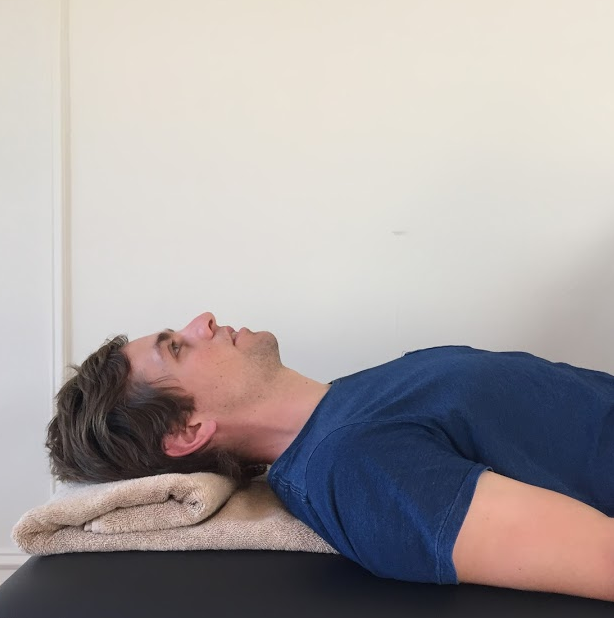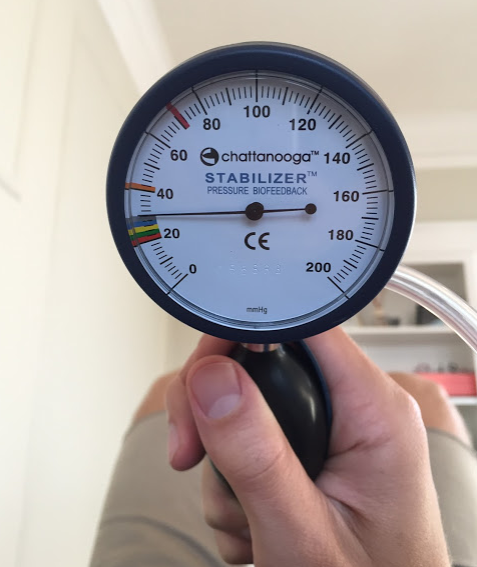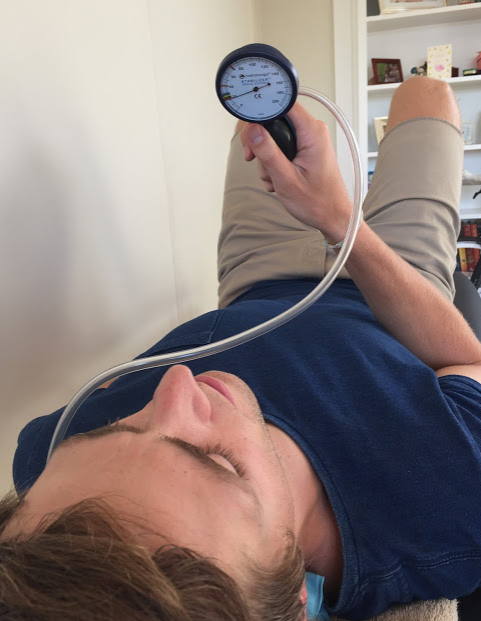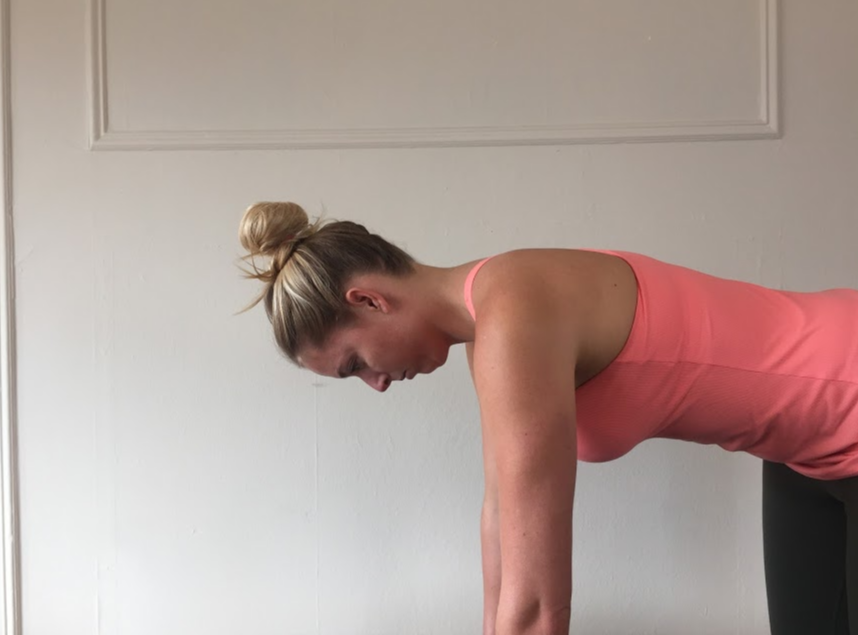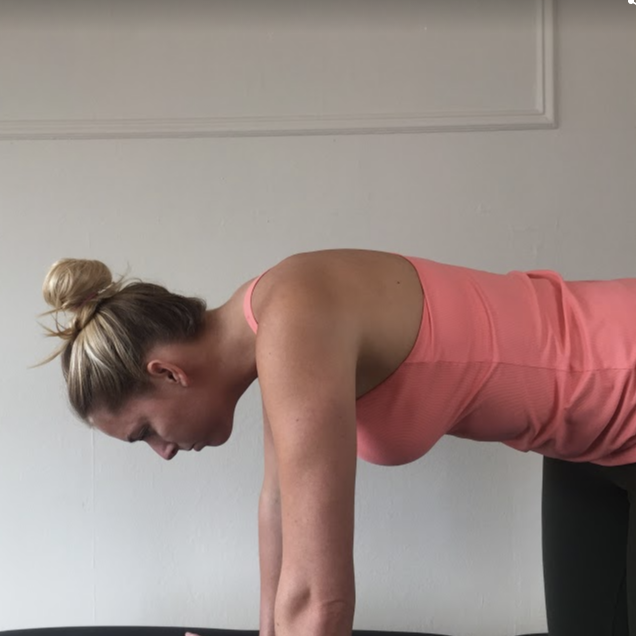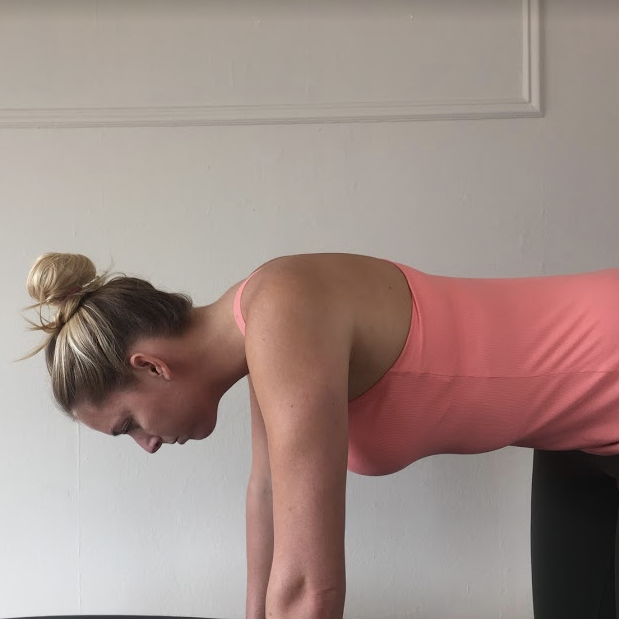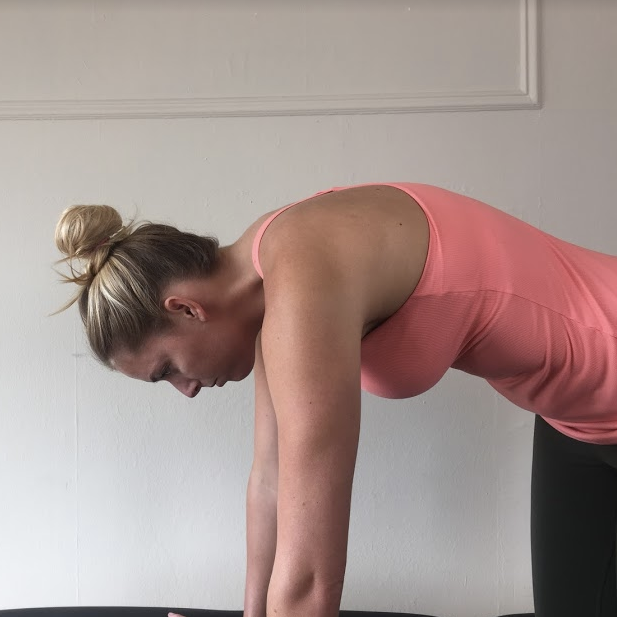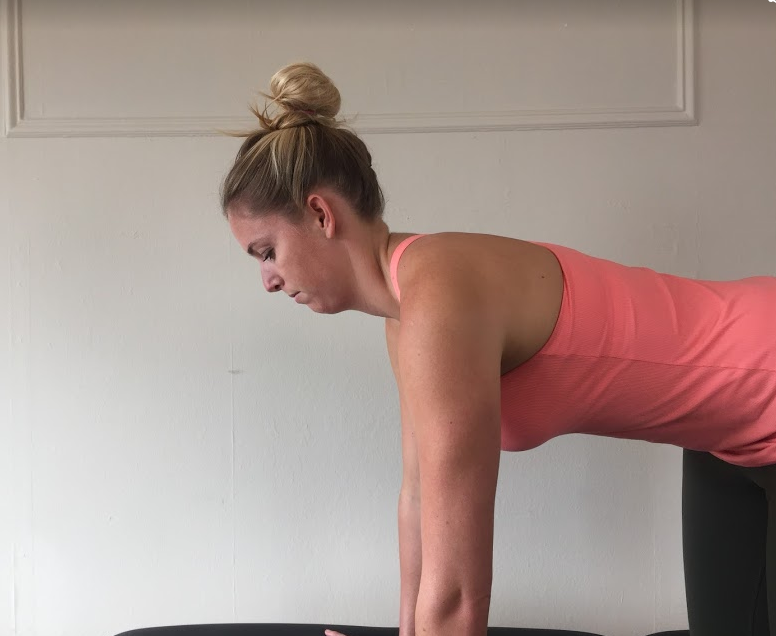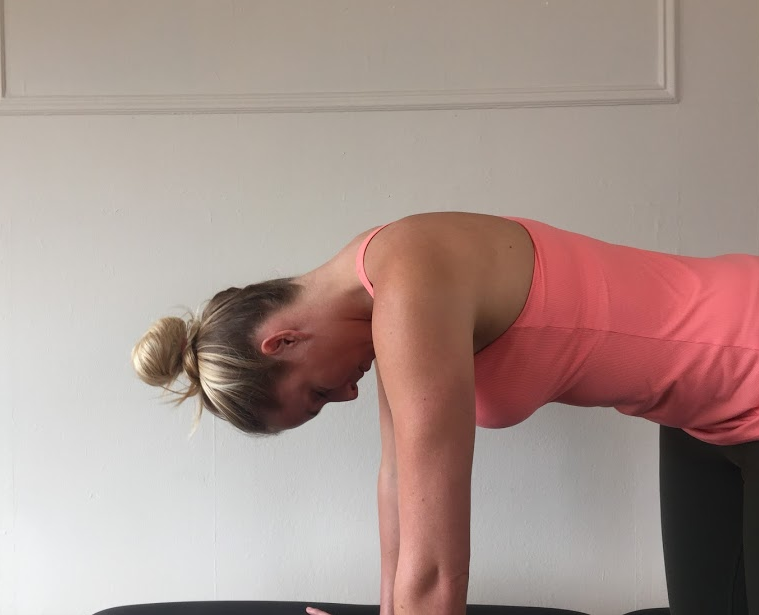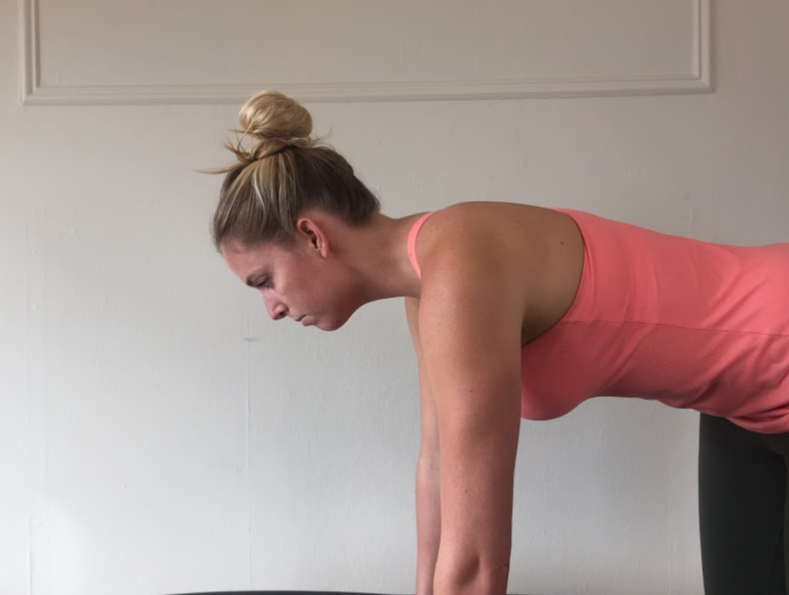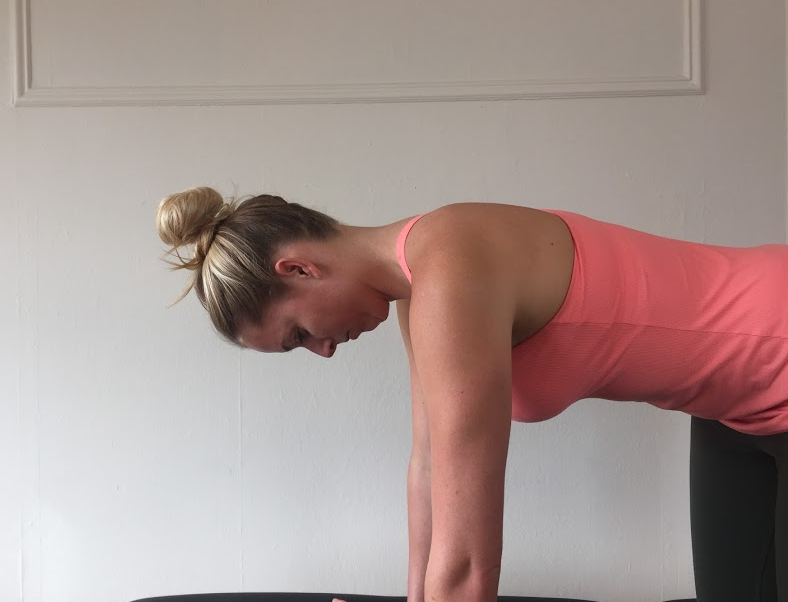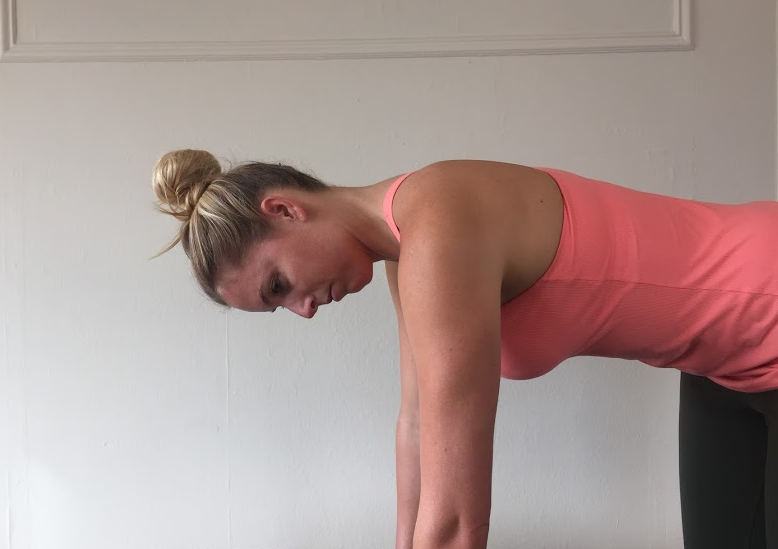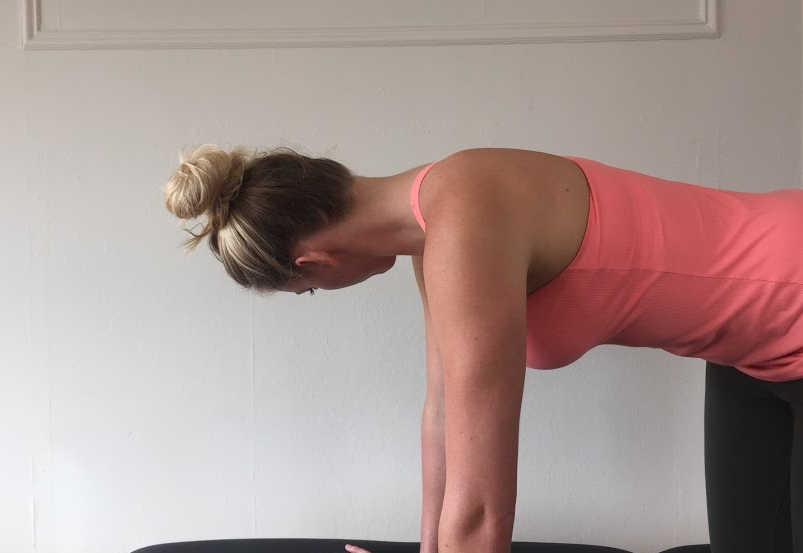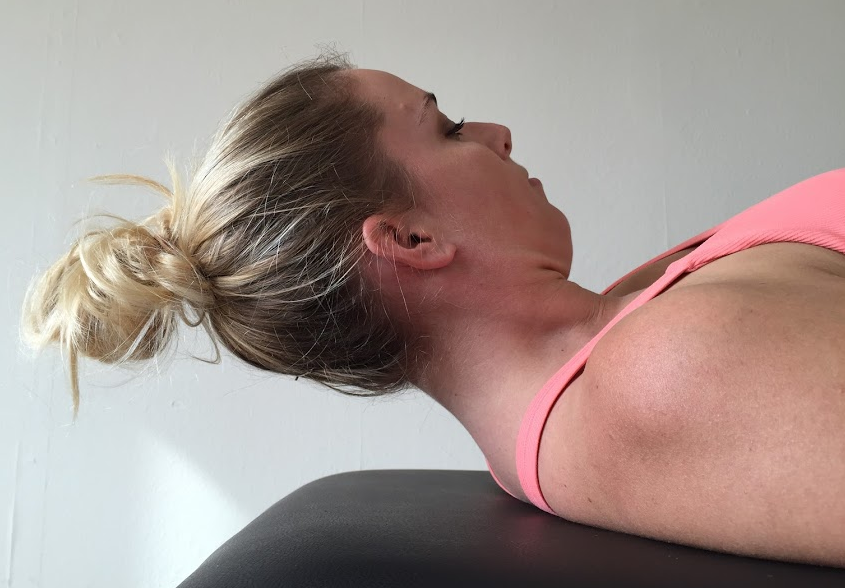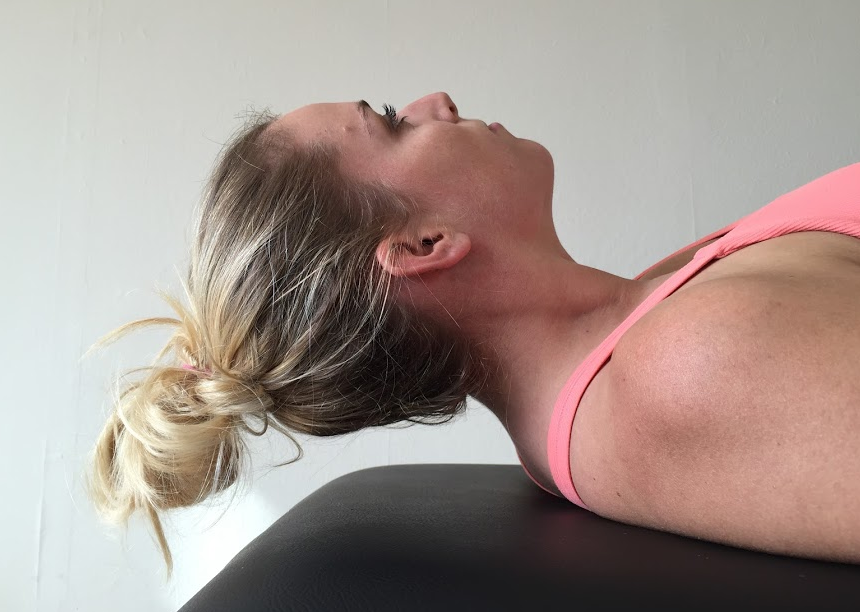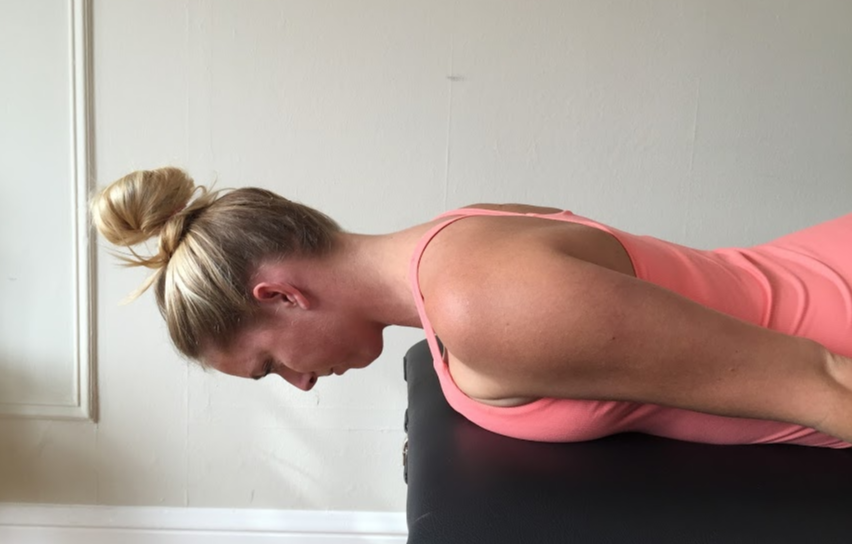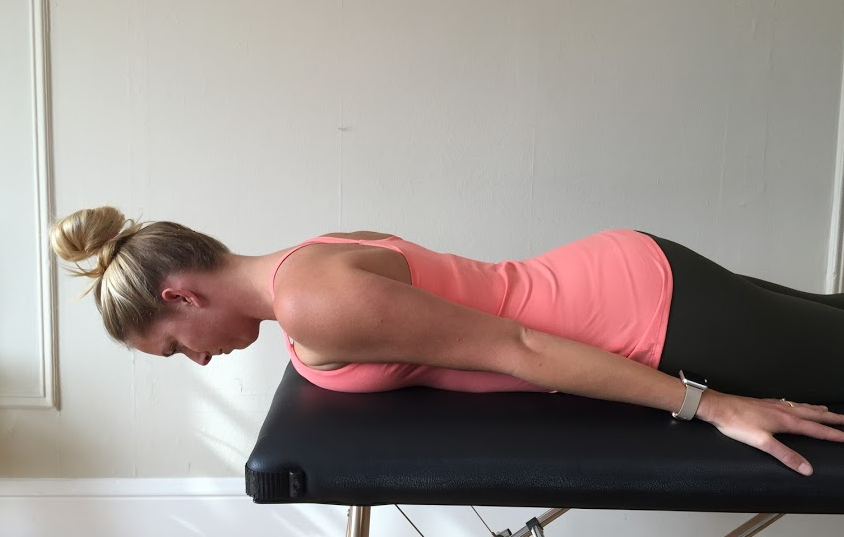Cervical Motor Control Part 2 - Assessing More Than Deep Neck Flexors
“The myriad of muscle impairments identified and heterogeneity of patients presenting with mechanical neck pain continue to challenge the acumen of even the most astute clinician, with regard to assessment and clinical relevance of such deficits” (O’Leary, Falla, Elliot & Jull., 2009., p. 324).
When I began researching this topic cervical spine motor control – more than just DCNF exercises, I wasn’t entirely clear on what I would find. Realistically, in the clinical setting, we have somewhere between 20-40 minutes to help our patients with neck pain. My suspicion is that many clinicians find the idea of providing manual therapy treatment and assessing motor control and designing targeted exercise programs to be overwhelming. I certainly felt this way when I was a new-grad. Perhaps this is why I only remember being taught the CCFT? But, knowing only this test leads in one direction only – giving patients DNCF exercises in supine.
So it got me thinking:
- What are the other tests for motor control and what should we expect to find?
- Are there any patterns we should look for related to specific neck pain disorders?
- When we want to begin rehabilitation – what is the starting point and how quickly should we expect our patient’s to progress?
- How do we continue to progress these exercises beyond the reduction of pain and restored range of movement?
- How do we continue to motivate our clients beyond that initial stage of recovery where they feel they are better?
I didn't find answers to all of these questions but I became aware how extensive the topic of cervical motor control really is. The purpose of this second blog is to take our knowledge of clinical anatomy and what the research suggests happens to motor control in neck pain from the first blog and progress into assessment. We will look at the assessment for both the cervical flexor and extensor muscle groups and discuss assessment of muscle coordination and strength/endurance.
Before we begin I just want to reinforce that motor control is one aspect of cervical spine assessment, which includes:
- Functional assessment
- Observation of posture and active range of movement
- Passive range of movement and palpation
- Neurological and neurodynamic assessment
- Joint position error and other tests for sensorimotor control, and
- Motor control.
“The challenge for clinicians assessing muscular deficits in the cervical region is the fact that mechanical neck disorders are not homogenous. Additionally, the physical conditioning requirements of patients presenting with mechanical neck pain are not homogenous” (O’Leary, Falla, Elliott & Jull., 2009, p.327). What this means it that there really is no clear pattern for motor control dysfunctions nor is there a set criteria for normal strength and function. Therefore, it is important to identify during the subjective examination what the functional requirements of the patient are.
Before you begin trying to quantify the motor control strategies of your patient it is a good idea to first observe them completing their functional task. “The observation of dynamic postural control of the cervical spine, although not usually directly quantifiable, is cornerstone in the clinical assessment of cervical muscle function” (O’Leary, Falla, Elliott & Jull., 2009, p.328). We use this time in observation to look at spinal postural, how the axio-scapular muscles are functioning, what the scapulohumeral posture is and how this changes between weight bearing and not weight bearing positions. This observational assessment is vital in helping us decipher the meaning of our muscle function tests and put all the information together. When observing movement and posture, the challenge for the clinicians is linking any abnormalities seen to the patient's neck pain.
Assessment for deep neck flexors
The craniocervical flexion test (CCFT) for muscle coordination
The craniocervical flexion test has been used in a research and clinical setting for the past 20 years. It was derived from the need to more thoroughly understand the role and function of the deep neck stabilising muscles in the hope of targeting exercises for patients with neck pain. It was also at this time that research increased around the changes of deep spinal muscle function in low back pain.
In the research trials deep cervical neck flexor control was difficult to objectively measure due to its location on the anterior vertebral column and proximity to pharangeal structures. In 2005, Falla, Jull, O’Leary and Dall’Alba demonstrated that using a nasopharyngeal approach to position EMG electrodes over the posterior oropharyngeal wall was a reliable way to evaluate the function of these muscles without risking injury related to previously used open anterior approach. The comparative assessment to the nasopharyngeal electrodes that we use clinically is the craniocervical flexion test (CCFT). As activity of the DCNF muscles is difficult to palpate or visually observe beyond the movement of craniocervical flexion, the use of a pressure biofeedback unit (PBFU) was incorporated into the assessment procudure (Jull, O’Leary & Falla., 2008).
The CCFT was developed to allow clinicians to differentiate between activity of the superficial and deep neck muscles. It is an indirect measure of deep neck flexor activity (Jull, O’Leary & Falla., 2008) and this low-load test can be performed in the initial assessment of patients with either acute or chronic neck pain (Jull, 2008).
CCFT procedure (Jull, 2008; Jull, O’Leary & Falla, 2008):
- Before beginning the test it is a good idea to observe what craniocervical flexion motion the patient can produce.
- The test is performed in supine crook lying with knees bent and a towel folded and placed under the patient’s head, so their face is horizontally level.
- The towel is placed under the occiput only to allow for the PBFU to be placed under the patient’s neck.
- The PBFU is then inflated to 20mmHg.
- The instruction to the patient is that this is not a strength assessment but one of precision and control.
- They should perform a head-nodding movement as if saying ‘yes’ and feel their head slide gently up the towel.
Test 1:
- The first aim is to move the pressure dial from 20-22mmHg. This position is held for 2-3 seconds before relaxing back to 20mmHg.
- The test is then repeated in 2mmHg increments with the aim to complete all five stages.
- The test is stopped when abnormal activity is detected by the clinician which may include:
- Palpable activity of SCM or AS.
- Head retraction or head lifting.
- Increased pressure on the PBFU without increased CCF movement.
- Inability to relax to 20mmHg.
At the end of stage 1 you have gained a baseline of the muscle activity. You then move onto stage 2 which is a test of isometric endurance.
Test 2:
- The test is commenced at the lowest level to see if the patient can hold 10 x 10 second isometric contractions at 22mmHg.
- Then they can progress to the next level (24mmHg).
- You should, document the activation score as the level of mmHg by the number of 10 second holds.
- E.g. 24 mmHg x 7 x 10 second holds = 4 x7 = 28
- The highest score being 100.
It is expected that subjects without neck pain should perform the test to the 3rd or 4th stage i.e. 26-28mmHg (Jull., 2008).
After completing this assessment, it is advised to reassess sitting cervical extension to evaluate the immediate effect of activation of these muscles on neck pain during active range of movement (Jull, 2008, p. 175). It not only tells you about the connection between pain and muscle function but also shows patients the impact that improving the control of these muscles will have on their problem.
In regards to abnormal test findings, there is one point I wish to explain further. “One thing that is important to observe for is the change in neck movement as the test continues. Research shows that the first level 20-22mmHg correlates with 22.9% of available craniocervical flexion. This incrementally increases and in the final stages, 28-30mmHg, 76% of the range should be used” (Jull, O’Leary & Falla, 2008. P. 528). So, if your patient isn’t moving further into range they are not performing the test correctly and the test should be stopped at the previous level they performed well.
“Caution should be taken in weighting too heavily quantitative measures of cervical muscle strength and endurance. They only measure one element of muscle performance, and they may be difficulty in establishing criteria as to normal versus impaired performance, particularly due to varied methods and technologies used, the spectrum of age ranges of patients seen in clinical practice, and the varied functional requirements of patients with respect to strength and endurance requirements” (O’Leary et al., 2009, p. 327).
What we can say is that patients with chronic mechanical neck pain with higher pain intensity will shower higher levels of superficial muscle activity during the CCFT. Caution should be used when extrapolating these findings to other functional activities and postures, as the link is yet to be confirmed. At this stage there is no correlation in performance on the CCFT and levels of disability or duration of neck pain.
Assessment for deep neck extensors.
Cervical extensors, both global and local act synergistically to support the weight of the head and produce neck extension. To assess cranio-cervical extension and control of the sub-occipital muscles the patient is position in 4-point kneeling or prone on elbows (Jull, 2008). “Muscles we have noticed to undergo the most changes in neck pain are the sub-occipitals, semispinalis cervicis and multifidus” (Jull., 2008, p. 176) and these will be the focus of our 'deep neck extensor' muscle assessment.
Before the test begins, it is important to ensure that your patient is stabilising correctly through their scapula and shoulders, otherwise their thoracic and scapulo-humeral positioning can alter the performance of the test. None of the pictures below demonstrate the correct starting position for the test.
As both extensors and suboccipitals are tested in the same position it is important to cue the patient about where the axis of movement is coming from. For the neck extensors (semispinalis cervicis and multifidus) the axis is through the C7 vertebra and the aim is to move their neck while keeping the head-on-neck region neutral.
- The first movement is to curl through flexion and extension using the entire neck.
- If the patient looses control of the cranio-cervical region the clinican will also observe excessive use of the splenius capitus.
- In most cases this test is performed in a pain-free manner (Jull., 2008, p. 176).
- If the patient can’t maintain a neutral cranio-cervical position then the therapist can help to maintain the upper cervical spine in neutral while the patient extends their neck to allow for assessment of the deep extensors (Schomacher & Falla., 2013).
- Documentation of this test is mostly based on observation of quality of movement and length of time/ number of repetitions.
Assessment for sub-occipital muscles.
Testing for the sub-occipital muscles is performed in 4PK with the therapist gently stabilising C2 vertebra to localise the movement to cranio-cervical movement.
- The patient is instructed to image that there is an axis passing through their ears which they are going to move around without using the rest of their neck.
- They should aim to make a small nodding movement for flexion/extension and rotation (<40 degrees) for rotation.
- Aberrant movements are often seen when the movement is jerky or not isolated to the upper cervical spine (Jull., 2008).
Assessment for endurance
Reduced endurance and increased fatiguability has previously been documented in WAD, chronic neck pain and idiopathic neck pain. To test endurance we look at the synergy between superficial and deep muscles for both cervical flexors and extensors. It has been reported that the DCNF contribute to 17% of the strength of the head lifting task (Jull, O’Leary & Falla., 2008, p 527). The reason this is important to our assessment is because research has show that 'patients with neck pain often show fatigue in both muscle groups (flexor & extensor) at 80 & 100% maximum voluntary contraction when compared to control subjects (Selvaratnum, 2009, p. 175). At lower levels of muscle activation, 50% MVC, fatigue was only evident in the neck flexors (Selvaratnum, 2009). What this statement suggests is that when thinking about the function of these muscles we might need to focus more on strengthening neck extensors to higher levels of MVC. Unfortunately, we can't expect to find a certain deficit in patients with neck pain. Edmondston et al (2011) looked at endurance of both neck flexor and extensor muscles in subjects with postural neck pain and found that there was no significant difference between pain and control groups. What they did find is that control groups are mostly consistent in performance and the pain group was extremely variable. Therefore, we need to use these tests to assess each individual and we can’t expect to see either normal of reduced function as there is no clear pattern for performance.
To test neck flexor endurance we can use the head lift holding test which is performed in crook lying. The patient is position with their head in slight upper neck flexion by the examiner by placing one hand under the occiput. The patient is asked to gently lift their head off the examiners hand without loosing the upper cervical flexion position. (Edmondston, et al., 2011). The median holding time for the flexor test is 36-38 seconds with the range being between 20-80 seconds.
To test neck extensor endurance you can position the patient in prone with their head off the table and test their endurance. This test was particularly hard to find consistent research describing how to perform the test and what the normative data was. I did find one study however...
In the study by Edmondston et al (2011) the patient was positioned in prone with their arms were down by their sides and their thoracic spine was anchored with a seatbelt to prevent thoracic extension. The head was then suspended with a 2kg weight and the length of hold time was measured. An inclinometer was also attached to their head and the test was continued until the subject became fatigued or moved from the start position by 5 degrees. The maximum hold time was 240 seconds. The median holding time for the extensor test was 165 seconds for the neck pain group and 228 seconds for the control group. This is the most clear description for a neck extensor endurance test that I came across in the literature. While it seems like a very detailed and concise test it also seems like a lot of work. Maybe this procedure creates a barrier to how people assess endurance clinically?
I don't want you to read this and think that is too complicated to practically achieve and therefore, this is the test I can recommend using instead is to position the patient in prone with their head off the table and measure the length of time they can hold the correct cervical posture without into cervicothoracic extension.
What are the mechanisms for changes in motor control?
You might be wondering what causes these changes in motor control? “The exact mechanisms underlying the changes in neuromuscular control in relation to chronic mechanical neck pain are unclear and are most likely multifaceted” (O’Leary, Falla, Elliot & Jull., 2009., p. 425-453).
Changes that occur physiologically include: atrophy, pseudohypertrophy, and fatty acid replacement of the cervical extensor muscles (O’Leary, Falla, Elliot & Jull., 2009., p. 325; Elliott, et al., 2014). These physiological changes in the muscle can then lead to changes in muscle behaviour and function.
Many authors comment on the possible mechanisms for altered neuromuscular control (O’Leary, Falla & Jull., 2011, p. 452; O’Leary, Falla, Elliot & Jull., 2009., p. 425). These authors suggest that muscle behaviour may change as a result of:
- Compensatory mechanisms for coinciding deficits in DCNF function.
- Changes in muscle spindle sensitivity through sympathetic activation or nerve pathology.
- Reflex-mediated adaptation of motor neuron discharges to pain.
- Alterations in cortical excitability and changes in the descending dive of muscles.
- Physiological distress such as stress, fear and anxiety.
- General disuse.
- Inflammatory response to injury.
While these changes in muscle behaviour have been frequently observed in patients with neck pain but, it is important to remember that each patient will present differently (O’Leary, Falla, Elliot & Jull., 2009). While we observe some consistency in patterns of motor control, these changes are generalised to neck pain. There is no distinct pattern in motor control dysfunction that differs between WAD, cervicogenic headache or mechanical neck pain for instance. Each patient will present differently and we need to assess them independently.
In Summary
When I decided to research this topic I began from scratch with the mindset to find what I had either forgotten or never known about motor control assessment for the cervical spine. In regards to the CCFT alone, it was great to remember that there are 2 stages to the assessment and there is a precise way to set up and perform the test. Things that I haven’t placed enough emphasis on before is to observe the increased range of CCF movement and to document endurance as an activation score.
I also learnt that deficiencies in CCF are generic across neck pain disorders including WAD, CGH and chronic neck pain. What this means is that a DCNF assessment in isolation is not a diagnostically helpful tool and must be used in a cluster of test.
After looking at the tests above for coordination and strength/endurance you may feel daunted by the amount of work that is needed to test each function of the muscles. But, being proficient and precise about test procedures is a great way to become more reliable and speedy. When taking the photos for this blog I was surprised but how hard they are to perform with good technique. So before you use them on your patients, practice the movements with a colleague and get a better understanding of your control and positioning in space.
Ultimately it comes back to being thorough and specific with assessment, which is based on sound clinical reasoning and hypothesis generation during the patient interview. Performing a cluster of structural and functional tests is the best approach to help us select an individually targeted treatment approach. You don't need to get through all the tests day 1, but keep them in the back of your mind and incorporate them into assessments as you can.
We are still at the stage where strong relationships between posture, altered neuromuscular control, and duration of pain/pain intensity/levels of disability have not been proven. We certainly have studies which explore these relationships and provide convincing hypotheses. The heterogeneity of neck pain is something that limits the results of these studies, just as it does with low back pain.
“No single test is conclusive or all encompassing in the assessment of cervical muscle function” (O’Leary, Falla, Elliott & Jull., 2009, p.329).
“We have yet to reach consensus about the optimal method of measuring, classifying, and training cervical muscle function” (O’Leary, Falla, Elliot & Jull., 2009., p. 324).
My biggest fear when I read this research is that other readers will interpret the lack of strong statistically significance as a reason not to perform neck rehabilitation. This is not true. We know it needs to occur and probably in more patients than we are currently giving it to. We just don’t have exact protocols on how it should be done and there is no quick, easy way to navigate the rehabilitation pathway. My hope is that this blog has shown you a range of tests you can use to assess motor control in patients with neck pain. The final 2 blogs discuss the importance of sitting posture and then delve into the stages of rehabilitation.
Sian :)
References:
Beer, A., Treleaven, J., & Jull, G. (2012). Can a functional postural exercise improve performance in the cranio-cervical flexion test? –A preliminary study. Manual therapy, 17(3), 219-224.
Caneiro, J. P., O'Sullivan, P., Burnett, A., Barach, A., O'Neil, D., Tveit, O., & Olafsdottir, K. (2010). The influence of different sitting postures on head/neck posture and muscle activity. Manual therapy, 15(1), 54-60.
Cleland, J. (2005). Orthopaedic clinical examination: an evidence-based approach for physical therapists. WB Saunders Co.
Edmondston, S., Björnsdóttir, G., Pálsson, T., Solgård, H., Ussing, K., & Allison, G. (2011). Endurance and fatigue characteristics of the neck flexor and extensor muscles during isometric tests in patients with postural neck pain. Manual Therapy, 16(4), 332-338.
ELLIOTT, James M., et al. Differential changes in muscle composition exist in traumatic and nontraumatic neck pain. Spine, 2014, vol. 39, no 1, p. 39-47.
Falla, D. (2004). Unravelling the complexity of muscle impairment in chronic neck pain. Manual therapy, 9(3), 125-133.
Falla, D., Bilenkij, G., & Jull, G. (2004). Patients with chronic neck pain demonstrate altered patterns of muscle activation during performance of a functional upper limb task. Spine, 29(13), 1436-1440.
Falla, D., Jull, G., O’leary, S., & Dall’Alba, P. (2006). Further evaluation of an EMG technique for assessment of the deep cervical flexor muscles. Journal of Electromyography and Kinesiology, 16(6), 621-628.
Jull, G. (2008). Whiplash, headache, and neck pain: research-based directions for physical therapies. Elsevier Health Sciences.
Jull, G. A., O'Leary, S. P., & Falla, D. L. (2008). Clinical assessment of the deep cervical flexor muscles: the craniocervical flexion test. Journal of manipulative and physiological therapeutics, 31(7), 525-533.
O'Leary, S., Falla, D., Elliott, J. M., & Jull, G. (2009). Muscle dysfunction in cervical spine pain: implications for assessment and management. journal of orthopaedic & sports physical therapy, 39(5), 324-333.
O’Leary, S., Falla, D., & Jull, G. (2011). The relationship between superficial muscle activity during the cranio-cervical flexion test and clinical features in patients with chronic neck pain. Manual therapy, 16(5), 452-455.
Schomacher, J., & Falla, D. (2013). Function and structure of the deep cervical extensor muscles in patients with neck pain. Manual therapy, 18(5), 360-366.
SELVARATNAM, Peter, et al. Headache, orofacial pain and bruxism. 2009.
Szeto, G. P., Straker, L., & Raine, S. (2002). A field comparison of neck and shoulder postures in symptomatic and asymptomatic office workers. Applied ergonomics, 33(1), 75-84.
VAN ETTEKOVEN, H.; LUCAS, C. Efficacy of physiotherapy including a craniocervical training programme for tension‐type headache; a randomized clinical trial. Cephalalgia, 2006, vol. 26, no 8, p. 983-991.



